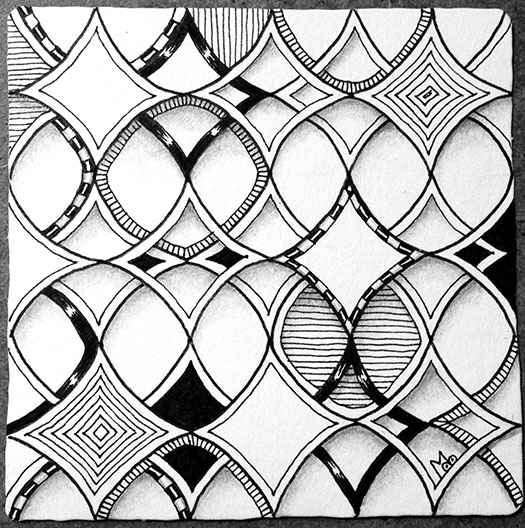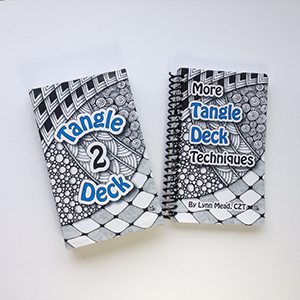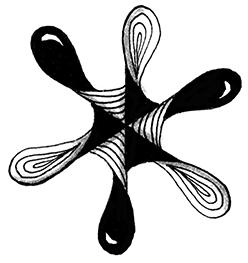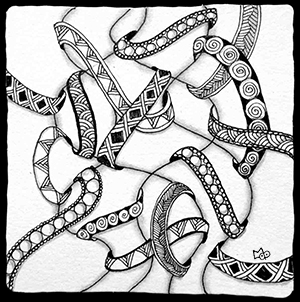
This past week the Square One focus tangle was C-wing by Staub Korn. It is one I had never tried before so I practiced it a bit in my sketchbook in order to get to know it a little better. I noticed a couple of interesting things about this pattern. First, there is an Ogee grid hidden in the pattern (I’ve gone over it in red in the photo below) and Second, it can be broken down into a Fragment which when mirrored and rotated forms the tangle ( I’ve also indicated the fragment in red).

If you are unfamiliar with Fragments, they are a concept that Rick and Maria have introduced in their recent book Zentangle Primer Vol. 1. Fragments are elements that when placed in a grid create a pattern. Note: R&M refer to the grids used with fragments as Reticula. Different patterns can be created by repeating, rotating or mirroring a fragment. But more about that in a later post.
For this week’s tile I started with a dot grid since I didn’t want the lines from a lined grid to show. I chose to use a variation of the tangle that offset the overlapping shapes in alternating rows.

I did the main outline with a .05 Apprentice pen. Then I drew an inner aura in each shape with a .01 micron. Some shapes I made see-thru so the shapes behind could be seen. Then I added tone and texture through line and fill.

The shading enhanced the effect of the solid and see-thru, the foreground and background. Here’s the final tile.

What I like about this tile is that the tangle is very regular but the fill is unexpected.
As always if you see something in this post that you’d like to try in your own work, please feel free to do so.
Blessings,
Lynn




















